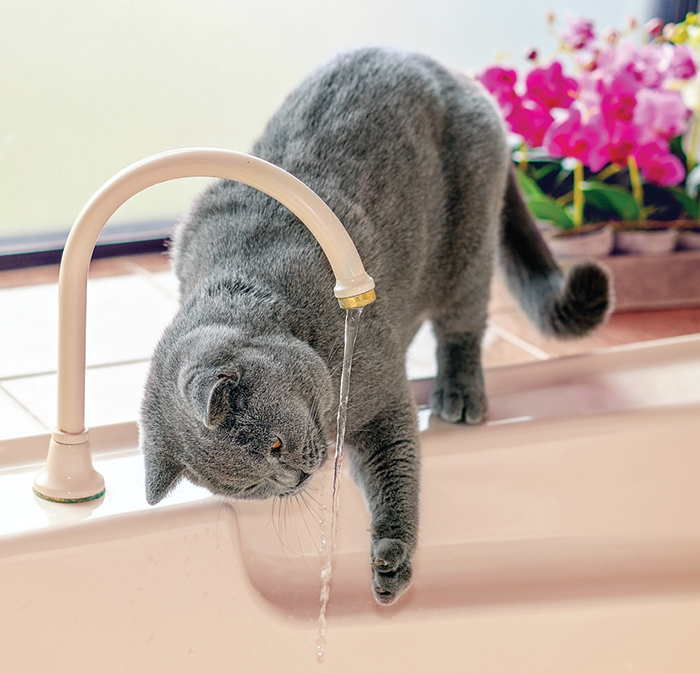Q. My calico foster cat came to me with a diagnosis of chronic kidney disease (CKD). She willingly ate wet prescription foods for a long time. When she began rejecting them, she accepted non-prescription wet foods, which I picked because they contained phosphorus and protein amounts that were similar to that of her prescription food. She recently passed away, after spending three years and two months with me.
I now feed my other, healthy cat non-prescription wet food that’s relatively low in phosphorus and protein, hoping to save her from Isabell’s fate. Is there any evidence that feeding this kind of diet to otherwise healthy cats can prevent the onset of renal disease?
A. Thanks for getting in touch, and I am very sorry to hear of the loss of your beloved friend. I know that this is a very hard thing to go through, and most sincere condolences from all of us here at the Cornell Feline Health Center.
To my knowledge, it is true that the only intervention that has been shown to alter long term outcomes in cats diagnosed with CKD is restriction of dietary protein and phosphorus. While other therapies, including the addition of antioxidants to the diet and the administration of stem cells of various origin, have shown some potential promise in preliminary studies, these have yet to be shown to improve quality of life or survival in cats with naturally-occurring CKD.
Unfortunately, I am not aware of any evidence that shows that any intervention, including dietary modification, can alter the likelihood of the development of CKD in cats. One major limitation in identifying such a potential preventive intervention is that we do not yet fully understand the mechanism of the development of CKD.
Proposed mechanisms for CKD in cats include autoimmune/inflammatory disease, bacterial/viral infections, and decreased blood flow to the kidney. If and when the mechanism(s) of this common feline problem is worked out, the possibility of identifying an intervention that can prevent its development, and of improved ways to treat it once it develops will almost certainly become more likely.
The fact that we do not yet know how to prevent CKD in cats, coupled with the knowledge that intervening early in the disease process once it develops improves outcomes, highlights the importance of regular screening of cats in an effort to identify CKD as soon as it develops.
Recent advances such as the use of symmetrical dimethyl arginine (SDMA) as a marker of long-term kidney health and of more advanced algorithms to predict the development of CKD in individual cats using commonly measured biochemical parameters hold promise for improving our ability to detect CKD as early as possible.
The most important intervention at this point, though, is making sure to promote adequate water intake and to bring your cat to the veterinarian at least once yearly until the age of 10 years, at which time twice yearly visits should be instituted. In doing this, the likelihood of catching CKD early is increased, and dietary interventions (along with other measures to address potential anemia, hypertension, and electrolyte problems that commonly accompany CKD in cats) can be instituted.
I hope that this is helpful, and we will be sure to inform the cat-loving public of any advances in this important topic in feline health as soon as we become aware of them.




